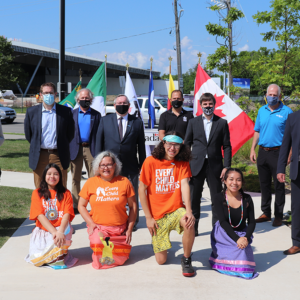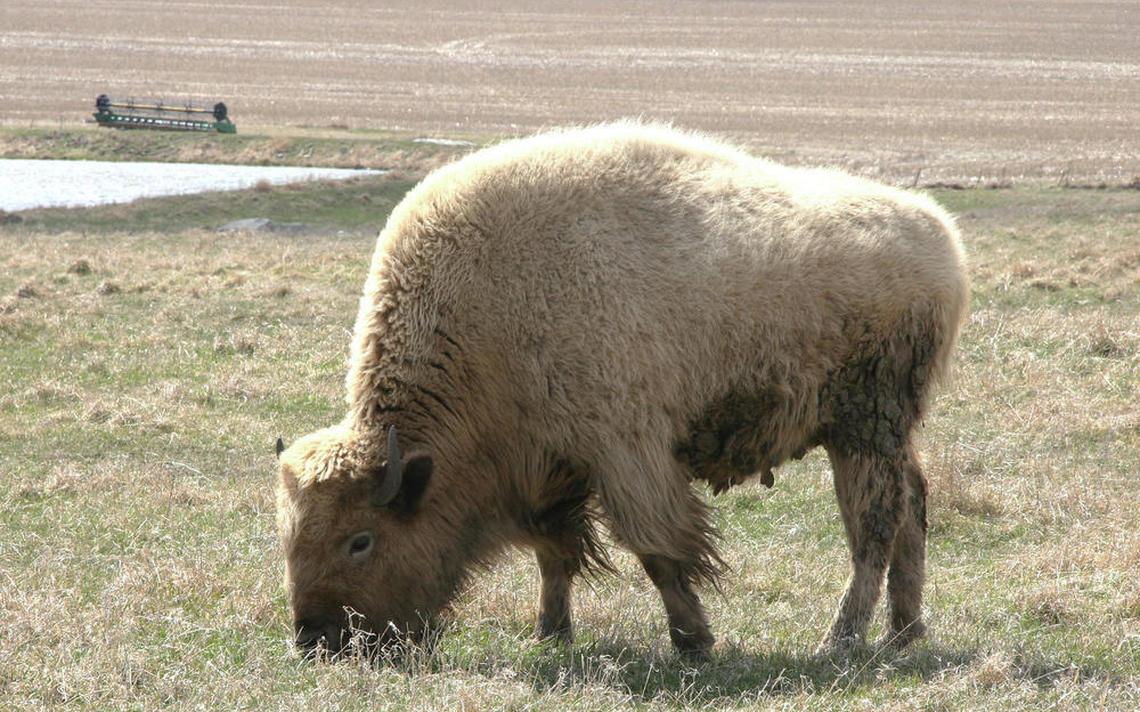The Line 9 campaign in Southern Ontario has been a movement that has used civil disobedience, education, and grassroots organizing to oppose tar sands expansion. On March 6, 2014 the National Energy Board approved the Line 9B Reversal project by Enbridge. By this December, Enbridge plans to have Line 9 flow up to 300,000 barrels per day of Bakken shale oil and tar sands crude from Sarnia to Montreal. The line runs in close proximity to over 9.1 million people including 99 cities/towns, and 18 First Nation communities.
Since May 2014 grassroots activists have blockaded Enbridge work sites on Line 9 for a total of 11 days through 5 separate actions, including the recent #DamLine9 blockade. Since the #SwampLine9 action in August 2013, there have been at least 46 charges laid against activists resisting Line 9, and work has been stopped for at least 18 days.
The current resource economy under Harper is premised on the myth that climate change doesn’t exist, and that pollution impacts from tar sands are an acceptable risk. Rather than prioritizing detailed health and environmental monitoring for downstream communities affected by current oil and gas projects, both government and industry have increasingly shifted resources to ‘public relations’. Under Harper, environmental monitoring and legislation has been cut, but funding for Orwellian tar sands advertising comes from public purses.
Communities in Treaties 6 and 8 territory have witnessed massive environmental contamination and loss of traditional lands over the course of 60 years of tar sands expansion. Health concerns, wildlife impacts, and an increasingly difficult time in maintaining traditional practices has compromised Treaty Rights to maintain culture and protect land-based economies. A recent University of Manitoba study found, “high concentrations of carcinogenic PAHs (polycyclic aromatic hydrocarbons), and heavy metals arsenic, mercury, cadmium, and selenium in kidney and liver samples from moose, ducks, muskrats, and beavers harvested by community members” in Fort Chipewyan, Alberta. This year, Dr. O’Connor’s whistle-blowing on cancer clusters in the community in 2006 were validated by Alberta’s Chief Medical Officer Dr. James Talbot. However, after acknowledging the clusters of rare cancers in Fort Chipewyan, Alberta Health issued a statement saying they do not plan to follow up with further research.
The National Energy Board has approved several controversial projects despite widespread public opposition, and panels to ‘hear public concerns’ are stacked by former oil executives. For the Line 9 NEB hearings, Vice.com uncovered that the decision makers on the project were, “Lyne Mercier, a former oil and gas sector manager, Mike Richmond, a corporate energy lawyer, and Jacques Gauthier, a former energy sector CEO who has worked closely with Prime Minister Stephen Harper.” In 1976, the political economist Larry Pratt wrote extensively about the influence that international oil companies exerted over political leaders in Canada. While describing the social impacts of tar sands projects on downstream communities, and ecosystems in Alberta, Pratt wrote,
“Industrial growth requires fuel, and that need sets in motion the familiar chain of events in which we sacrifice renewable resources for the exploitation of non renewable material… If political conflict does develop over the costs of economic growth, the tar sands could well become its focus and emblem.”
Today, decades long planning and political lobbying by international oil companies has resulted in clear divides between public interest on one hand and corporate profits on the other.
In 2011, the International Monetary Fund reported that Federal subsidies to oil and gas under Harper represented 1% of GDP, or approximately $17.6 billion in 2011. Revenues for Suncor who are currently extracting tar sands in Alberta and processing in Sarnia, Ontario were approximately $40 billion in 2011, and $41.6 billion in 2013. Enbridge pipelines profited $505 million from liquid pipelines in 2011, and $427 million in 2013. Enbridge claims refineries will save $23 billion over 30 years with the Line 9 reversal, though other estimates put the figure at $3-5 billion. The cost of the Kalamazoo Spill by Enbridge in Michigan has been over $1 billion so far.
During this period of unprecedented corporate profit and ecological destruction, legislation and funding to protect water and the environment have been largely eliminated through a series of Omnibus bills. Just three years ago, a federal Environmental Assessment (EA) on Line 9 would have been mandatory. Today, despite calls from eight municipalities in Southern Ontario (including Toronto, Hamilton, Kingston, and all five municipalities in Durham) for a full and comprehensive EA, both the Provincial and Federal government have ignored the public and messaged confidence in Enbridge despite several clear instances where Enbridge has lied to the public.
During the NEB process, about 80 applicants presented to the panel. The process itself is the subject of two separate lawsuits. Forest Ethics chairperson, and lawyer Clayton Ruby has challenged the constitutional validity of the NEB hearing process, and if successful the lawsuit could reopen the Line 9 hearings. The Chippewas of the Thames First Nation is challenging the NEB decision on grounds of consultation and accommodation of Treaty Rights. In the NEB decision, the panel decided Enbridge had met duty to consult obligations, despite several presentations by First Nation leaders, academics, and allies who demonstrated that consultation on Line 9 had been inadequate in several communities.
In both Toronto and Montreal, activists disrupted the NEB hearings and mobilized hundreds to the streets to protest the undemocratic process. The final day of the NEB hearings were cancelled when a powerful speech by Indigenous rights activist Amanda Lickers brought on spontaneous chants and round dances, during which the NEB panel scrambled out the door. The following day, approximately 1000 people gathered in Toronto where the hearings were supposed to be held. On March 6, 2014 Line 9 was approved by the NEB and over 100 people mobilized on 48 hours notice at Queen’s Park to contest the decision.
During the Ontario Provincial election in 2014, 67 candidates committed to calling for an environmental assessment on Line 9 if elected. The majority were Green and NDP candidates, but several Liberals also supported an EA, due mostly to effective lobby efforts by grassroots community groups. On May 10th,approximately 1500 marched from City Hall in Toronto to Queen’s Park to demand an EA on Line 9, highlighting the potential impacts on Indigenous communities and ecosystems. Over 10, 000 people have signed online petitions calling for an EA on Line 9. Yet, the question of conducting an EA has yet to be addressed by either the Federal or Provincial governments.
On June 20, 2013 activists blocked work on the Westover pumping station in what was dubbed #SwampLine9. The blockade lasted 6 days, and activists had to be cut from bicycle locks to be removed from site. On Dec 4th 2013 activists in Toronto shut down an Enbridge pipeline replacement site by locking themselves to barrels and equipment. The largely symbolic protest in (cold) December and the #SwampLine9 blockade became a prelude to a summer of action in 2014.
On May 20, 2014 protesters shut down an ‘integrity’ dig outside of Burlington for 12 hours to represent the over 12,000 anomalies detected by Enbridge during pipeline assessments. On July 14th, activists stopped work on a similar dig in Etobicoke and just three days later, a coalition of activists and members of the Six Nation’s Men’s Fire shut down an integrity dig taking place on the Haldimand tract. The dig was being conducted without the consent from, or consultation with, Six Nations. On Aug 5th, activists began the #DamLine9 action which resulted in a six day occupation of a valve-installation project by Enbridge. When an injunction was served, two activists locked down to barrels filled with 1000 pounds of concrete and remained there for approximately 10 hours until they were extracted by force. The activists support team was arrested as well.
The Line 9 campaign in Southern Ontario has been foremost a grassroots effort, with little funding, but much heart. Organizers have hosted dozens of educational events for union locals, universities and schools, as well as allied groups, and potentially impacted communities. The support received by the campaign has been enormous, and has involved hundreds of hours and hundreds of hard working and dedicated activists who have helped bring awareness along the pipeline. Keeping up public pressure to challenge tar sands expansion is a responsibility both to present and future generations, as well as to the land we live on, and the water we drink.
Dave Vasey is an environmental justice activist living in Toronto. Special thanks to Lana and Umair for help with edits. This is an abridged version of an article that first ran on www.rabble.ca.







